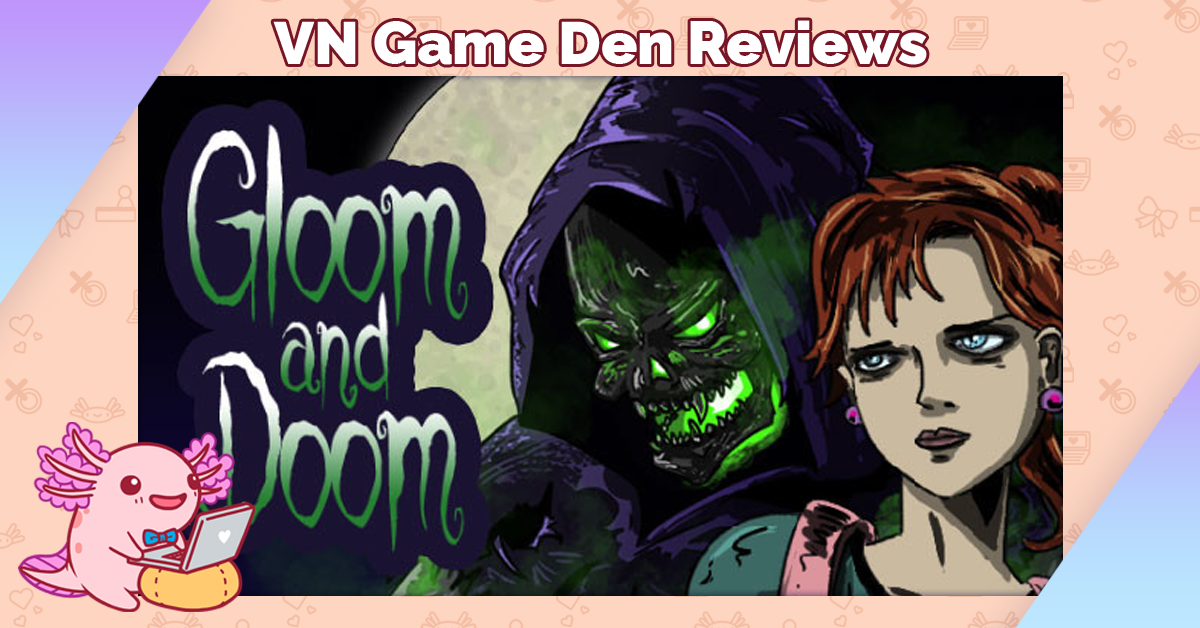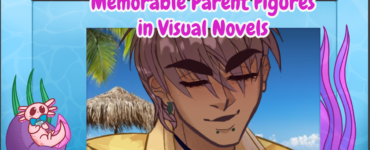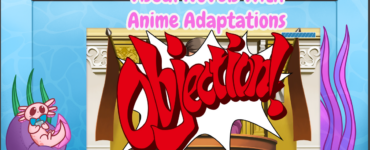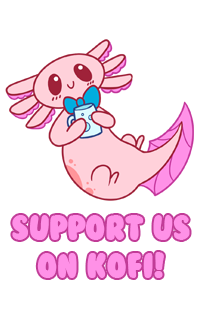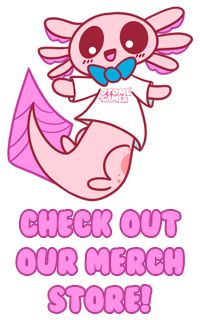Gloom and Doom is a humorous supernatural-themed visual novel developed by Neo Tegoel Games. It features a story told through multiple perspectives, including those of a wraith looking for redemption and a girl known as the Doom Bringer.
VN Game Den was given an advance copy of the game to review.
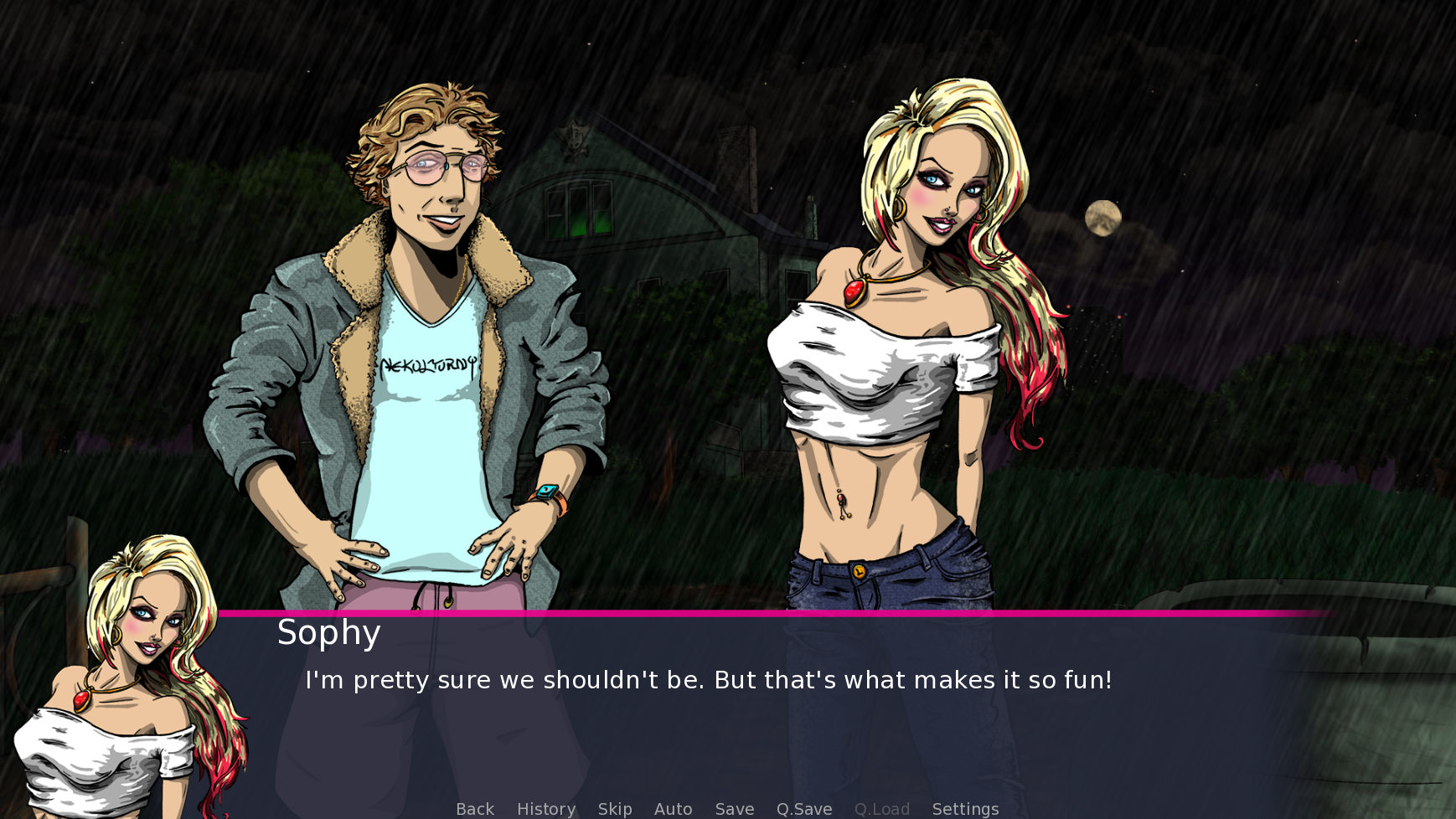
Gloom and Doom is an ambitious game, featuring the story of not one but multiple characters as they try to save themselves.
You start the game playing as Roger, a teenage boy trying to hook up with a cute girl he meets at a sports game. You follow the two of them briefly as they maneuver through a haunted house. The pair have an interesting conversation that acts as a tutorial for the game. It’s not often that a tutorial is given in a visual novel, though it was nice to see this accessibility option added to allow new players to feel comfortable playing.
Sophy breaks the fourth wall as she explains to Roger how playing a visual novel works, though the explanation is drawn out and breaks player immersion. It feels out of place, as Sophy is explaining to Roger what buttons to click when he is seemingly unaware of his part in the story—perhaps because he isn’t the main character at all, and is simply a stepping stone for the real conflict to take place.
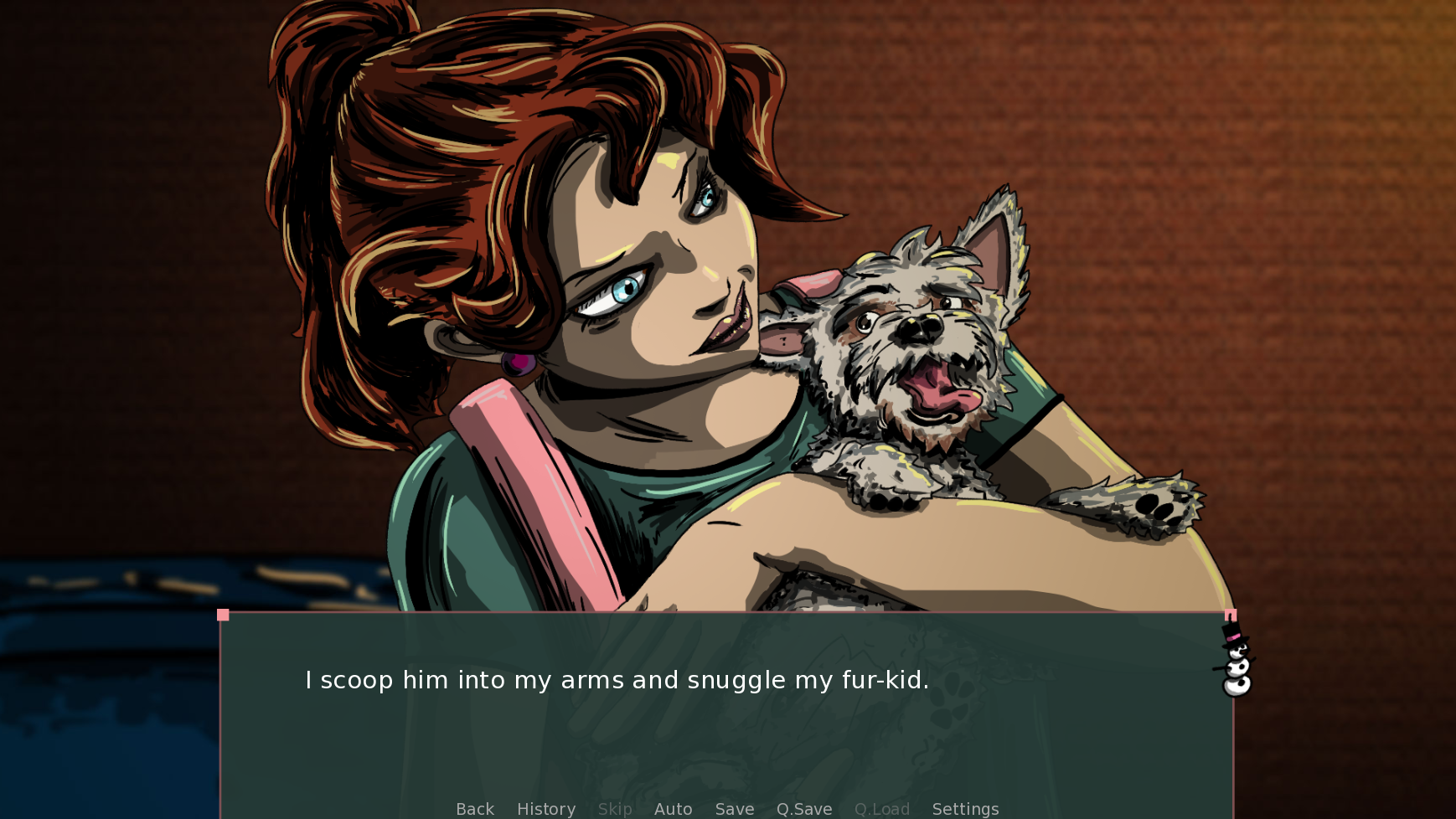
You play as Roger briefly before switching over to Gloom and Wynona, the game’s true protagonists. These characters introduce two new points of view, both in perspective and in written prose. While Roger’s story is told to us in third person, Gloom’s story is told to us in second person and Wynona’s story is narrated as first person. The shift in storytelling feels a bit jarring.
The actual transitions between each character’s narratives are done quite well, emulating a retro fighting game’s loading screen. The boxes around each character’s name are highlighted and bounced between before ending with a sound and animation.
In fact, most of the game’s animations are impressive. Character sprites are zoomed in, morphed, and sometimes moved. These fluid motions create powerful and engaging cutscenes, making the game feel like a movie.
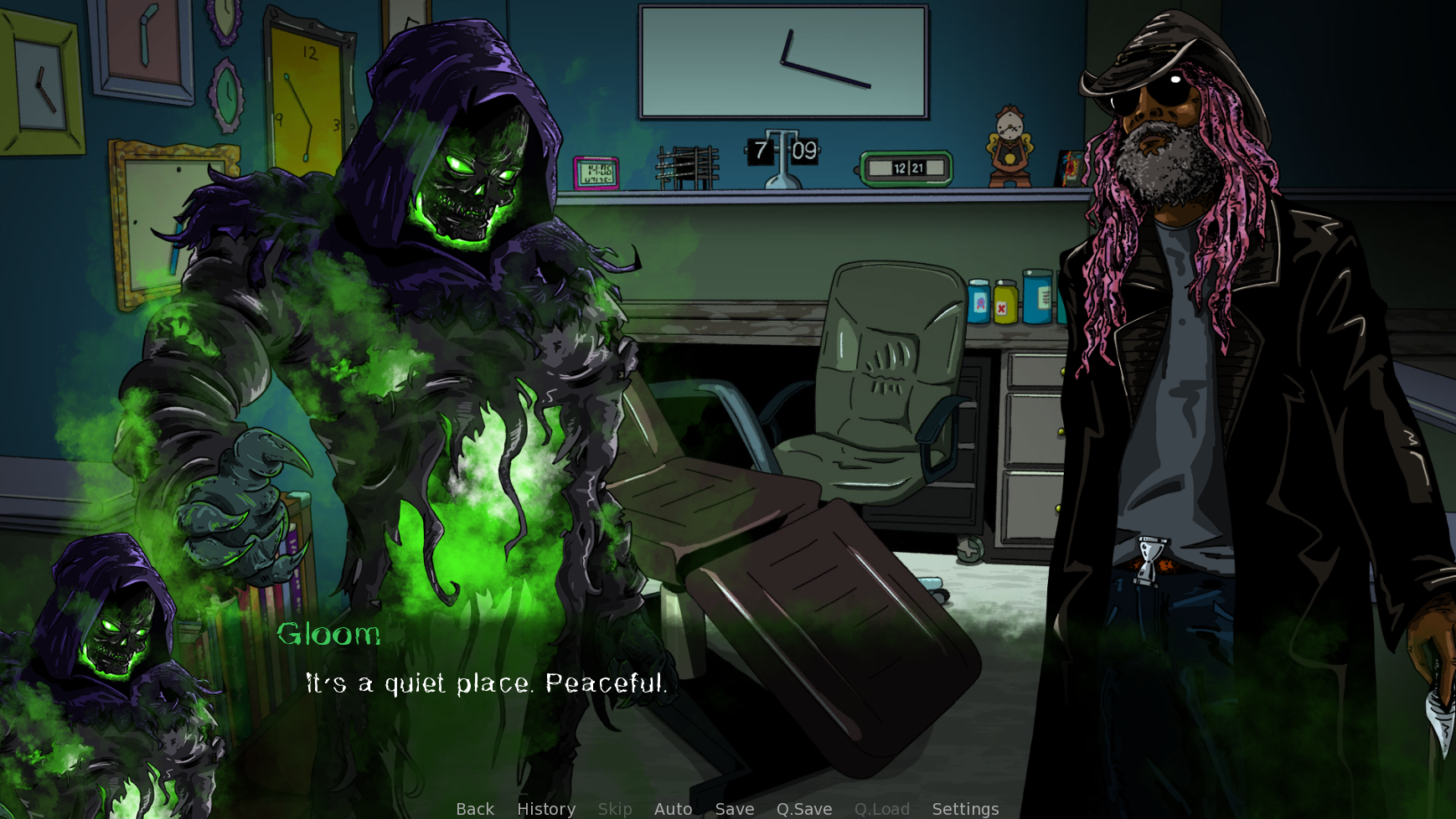
But as we get further and further into the game it becomes increasingly clear that Gloom and Doom’s story simply has too much going on. We are pelted with joke after joke, a multitude of references to popular movies and games, and even fonts that change based on the character speaking. The action of Gloom and Doom drags on rather slowly, muddled down by extraneous details, jokes, and constant point of view changes.
As a whole, Gloom and Doom’s aesthetic is done rather nicely. The art is distinct and unique, with robust character designs and backgrounds to match. The only things I would change are the UI, which is rather basic, and the font changes, which distract too much from the text itself.
The music and sound effects are a great addition to the game. The tracks alert you to the action and tone of the scene while the sound effects further illustrate the scenes to create a cinematic experience.
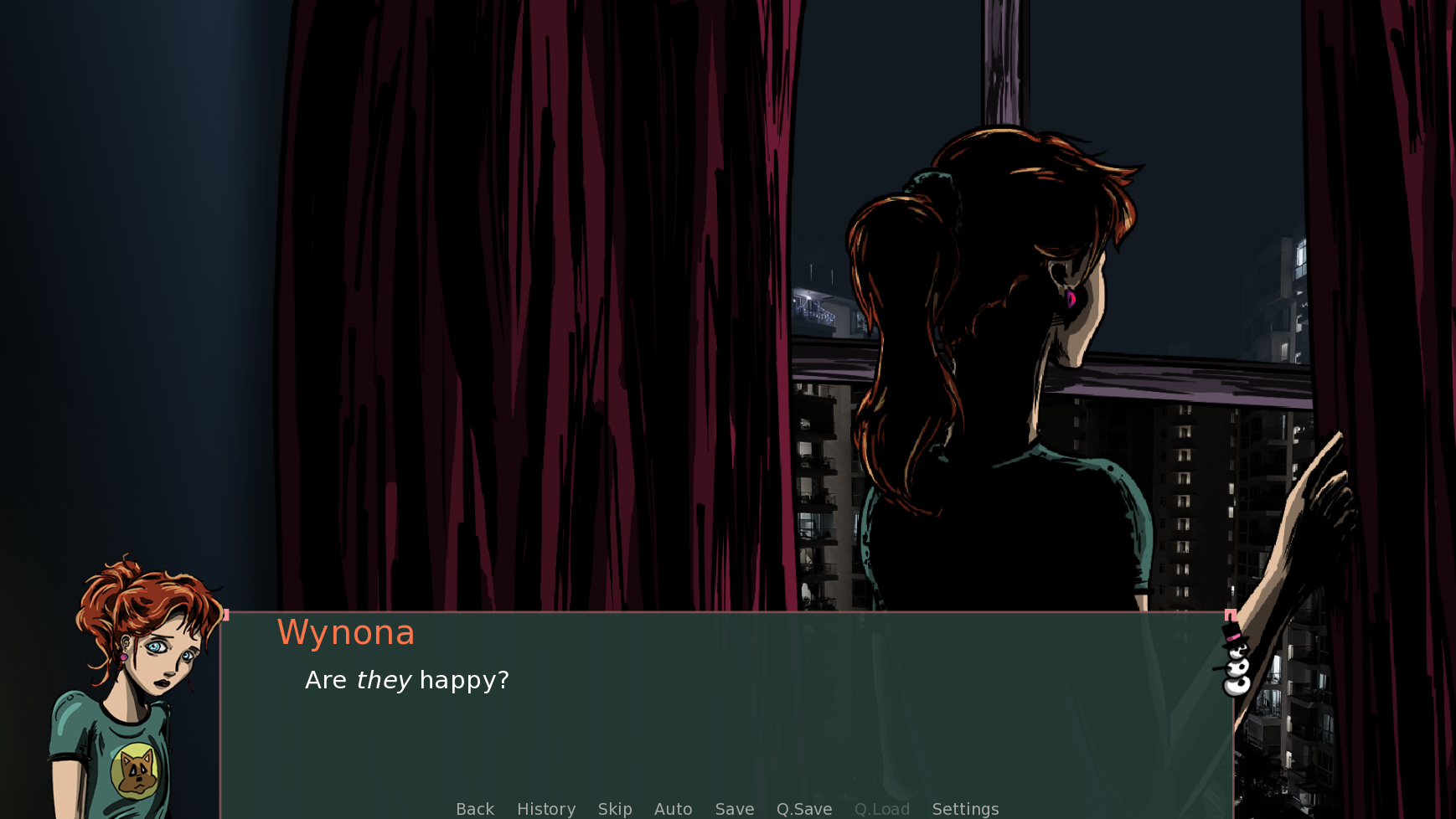
All in all, Gloom and Doom will appeal to a nostalgic soul with a heart for supernatural action. Some of the dialogue is super cheesy, but it puts a lighthearted spin on an otherwise gloomy tale.
Gloom and Doom releases on Steam on January 18th.

